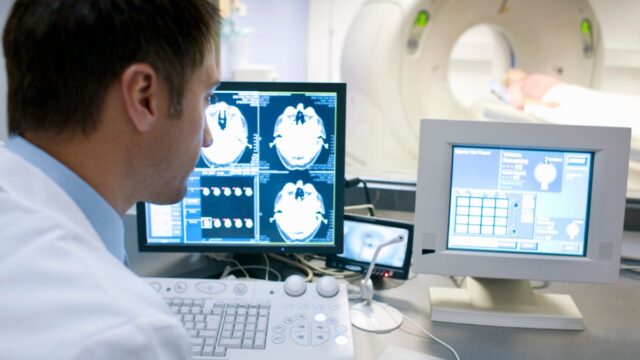World Brain Tumour Day is commemorated on the 8th June of every year. The purpose of the day is to raise awareness about the health condition, which can be either benign or malignant, depending on the location and the grading.
World Brain Tumour Day History & Significance
The history of World Brain Tumour Day dates back to 2000. Deutsche Hirntumorhilfe declared the 8th of June of every year as an annual event. It not just gives the deadly disease a global platform but also pays tribute to patients diagnosed with the disease and their families. The initiative is undertaken by the German Brain Tumor Association across the world to spread awareness about the health condition, emphasising World Brain Tumour Day significance.
5 World Brain Tumour Day Facts & Tidbits About The Health Condition
- As per the International Association of Cancer Registries (IARC), more than 28,000 incidences of brain tumour are recorded annually in India alone. Out of these, a significant 24,000 people succumb to the medical condition.
- Brain tumours can be benign (non-cancerous) or malignant (cancerous).
- Brain tumour may originate from the brain or may have spread to the brain from other organs of the body like the breast, lungs, prostate, or kidneys.
- The incidents of tumours of the Central Nervous System (CNS) range between 5 and 10 per 1 lakh population.
- The incidents of malignant brain tumours have been on the rise by 2% in India.
What Is Blood Tumour & What Are The Different Types Of Tumour?
A brain tumour originates in the brain cells that abnormally multiply and might spread to other parts of the brain as well. It can be cancerous (malignant) or non-cancerous (benign), depending on their location and grading. The grading is determined by the speed at which the cells multiply and spread to adjacent organs.
Brain tumour can broadly be classified under two categories:
1. Benign Brain Tumours:
These are not cancerous in nature, although they can give rise to several other health conditions. They grow slowly and don’t spread to other tissues. They can usually be removed easily and do not return after being removed successfully.
2. Malignant Brain Tumours:
Malignant tumours are cancerous, grow fast, and also spread to other parts of your brain or Central Nervous System. In this case, the health complications can be life-threatening.
10 Brain Tumour Types You May Want To Know About
Broadly, there are 10 brain tumour types. They are as below:
Primary Brain Tumours
1. Gliomas & Related Brain Tumours
Gliomas refers to growths of cells that resemble glial cells, which support nerve cells in the brain tissue. Gliomas are usually malignant, although they can be benign too at times. Some of the most common types of gliomas and related brain tumours include astrocytoma, ependymoma, and glioblastoma (the most common type of malignant brain tumour).
2. Embryonal Tumours
This type of brain tumours originates in cells that are left over from foetal development. These cells, referred to as embryonal cells, remain in the brain after birth. They are usually malignant in nature and develop mostly among babies and young children. Medulloblastoma, the most common type of embryonal tumours, is located in the brain’s lower back, known as cerebellum.
3. Choroid Plexus Tumours
These tumours start in cells that make the fluid surrounding the brain and the spinal cord and can be either malignant or benign, and mostly develop among children.
4. Pineal Tumours
These start in the pineal glands of the brain, which is the central part of the brain. They can be malignant or benign, and are more common among children.
5. Germ Cell Tumours
These tumours originate in the reproductive cells called germ cells, which gradually develop into becoming sperm or egg cells. Although they are mostly found in ovaries and testicles, they can also be found in other parts of the body such as the brain. These are mostly benign and are more common among children.
6. Nerve Tumours
As the anime suggests, they develop in and around nerves. The benign variety is generally found in the main nerve that bridges the inner ear and the brain.
7. Meningiomas
In this case, the brain tumours originate in the membranes around the brain and the spinal cord. They are rarely malignant. It is the most common type of benign brain tumour.
8. Pituitary Tumours
These in and around the pituitary gland, which is located near the base of the brain. They are usually benign in nature.
9. Other Brain Tumours
Rare forms of brain tumours can develop in and around the brain like blood vessels, muscles, and connective tissues. Tumours can also start at the base of the skull.
Secondary Brain Tumours
Secondary brain tumours account for the majority of brain cancers. They start in a certain part of the body like lungs, kidney, breast, or skin, before spreading to the brain. These are always malignant.
19 Brain Tumour Symptoms You Should Be Aware Of
The signs of brain tumour that are non-cancerous or benign develop slowly and usually become noticeable after a few months or even years. In contrast, the signs of brain tumour that are cancerous get aggravated quickly. They manifest suddenly and usually worsen within a few days or weeks. The following are some of the most common brain tumour symptoms.
- Headache in the morning that seems to be at its worst in the morning
- Frequent headaches that are severe.
- Migraine
- Nausea
- Trouble with balance
- Lack of feeling in an arm or leg
- Blurry vision
- Double vision
- Losing sight on the side of your vision
- Fatigue
- Dizziness
- Speech problems
- Partial loss of memory
- Confusion
- Changes in behaviour
- Trouble with following simple directions or commands
- Problems with hearing
- Feeling hungry frequently and subsequent weight gain
- Seizures, even among people with no history of this medical condition
How Is Brain Tumour Diagnosed?
1. Medical History:
The doctor is likely to enquire about your family history of brain tumour or other health conditions related to the brain.
2. Physical Examination:
The doctor is likely to undertake a thorough neurological examination. He/she is also likely to conduct a test to examine the condition of certain nerves that originate in your brain.
Your healthcare practitioner may also examine your eyes to get a deeper look through your pupils and retinas, and evaluate whether there is swelling in your optic nerve. This nerve may look different when pressure increases in the skull. The doctor may also analyse your memory, muscle strength, coordination in movements, and ability to make mathematical calculations.
Medical Tests For Diagnosis Of Brain Tumour
After undertaking a physical examination, your doctor may recommend any or all of the below medical tests:
1. CT Scan Of The Head
CT scans of the head scans your brain with an X-ray machine. The results of a scan give your doctor the opportunity to take a close look at your brain.
2. MRI Of The Head
Here, a special dye is used to detect the presence of tumours. What sets it apart from a CT scan is that an MRI doesn’t involve the use of radiation and also offers a more extensive picture of the structures of the brain.
3. Angiography
This test involves a dye that’s injected into the artery, generally in the groin area. This dye makes its way to the arteries in the brain, which helps in mapping the channels of blood supply to the brain tumour. This information is essential during the time of surgery, if that is necessary.
4. Skull X-Rays
A skull X-ray offers an overview of fractures in the bones of the skull, if any. They also help in detecting the presence of calcium deposits that are found inside a tumour.
5. Biopsy
A small part of the tumour is obtained during this test, so the neuropathologist can identify and examine the presence of tumour cells, if any. The test also determines whether the tumour, if present, is malignant or benign. That apart, it is also effective in determining whether the cancer originated in the brain or in another part of the body.
What Are The Treatment Options For Brain Tumour?
The brain tumour treatment depends on several factors like the type of humour, its size, location, and your general health.
1. Surgery
The most recommended treatment for malignant or cancerous tumours is surgery. The objective here is to remove as much of the cancer as possible without damaging the healthy parts of the brain. Whether the tumour can be removed entirely depends on its location. Certain tumours may be located in areas that are beyond reachable limits. In such cases, even partial removal of the brain cancer can be beneficial.
For benign tumours that are diagnosed as clinically dangerous, surgery is usually again the only treatment that is advised. Cancers that may have spread to the brain from other body parts or brain cancer that shows signs of spreading or metastasising to other parts of the body are treated on the basis of the type of original cancer.
2. Other Treatments
Surgery may be combined with other treatments like radiation therapy and chemotherapy. Other types of therapy like physical therapy, speech therapy, or speech therapy may be recommended after neurosurgery.
Being aware of some of the most common symptoms of brain tumour is important, so that you can seek medical assistance while the health condition is still at its early stages. The earlier the diagnosis, the better are chances of the condition being treated effectively. This, in turn, determines the chances of survival.
Open up like never before and participate in conversations about beauty, entrepreneurship, mental health, menstrual & sexual health, and more. Desi women, join our community NOW!



